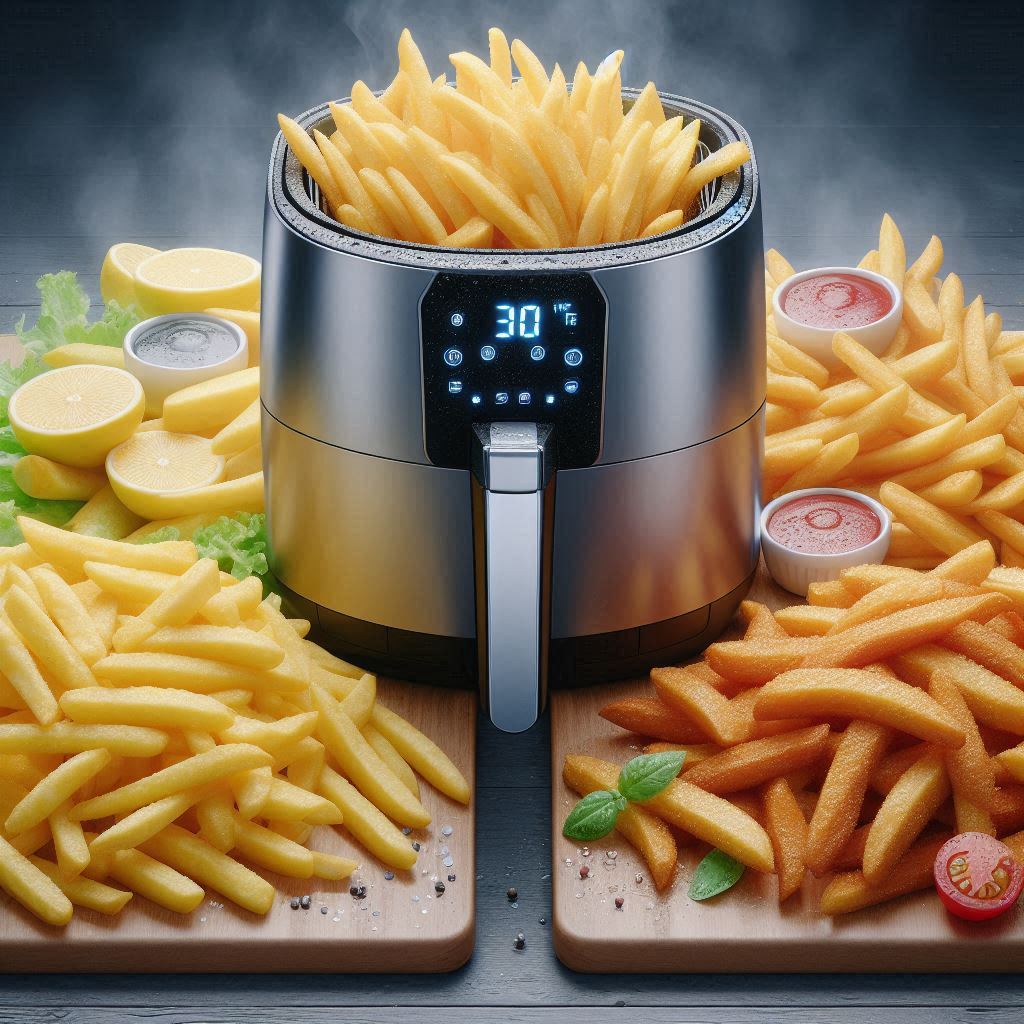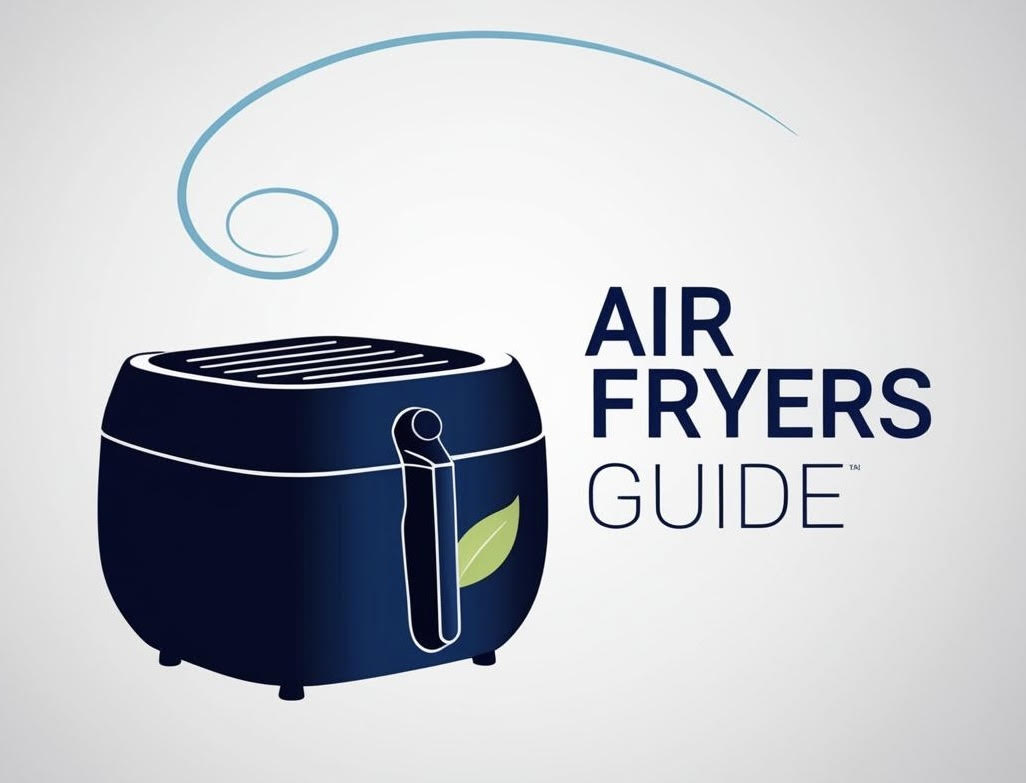Air Fryer Tips for Success: Get Perfect Results Every Time

Air fryers are fantastic appliances, but getting consistently perfect, crispy results sometimes requires a few insider tips. After experimenting with countless recipes and different types of food, we've discovered some essential best practices to help you get the most out of your air fryer. Whether you're a complete beginner who just unboxed your first machine or you're looking to troubleshoot common issues and improve your results, these tips will help you achieve perfectly cooked, crispy food every time.
Essential Air Fryer Tips & Tricks
Follow these fundamental tips to elevate your air frying game and achieve delicious, crispy results consistently:
- Don't overcrowd the basket. This is arguably the most crucial tip for achieving that coveted air-fried crispiness! Food needs space for the hot air to circulate completely around each piece. Piling food up will result in steaming, not frying. This might mean cooking in smaller batches, but the payoff in texture and even cooking is absolutely worth it.
- Preheat your air fryer. Just like a conventional oven, giving your air fryer 2-5 minutes to come up to its set temperature makes a significant difference. Preheating improves initial cooking results, helps create a quicker sear or crust, and leads to more consistent cook times.
- Use a light spray or toss of oil. While you don't need gallons of oil like deep frying, using a light coating or spray of oil on most foods helps promote browning and crisping, adds flavor, and can prevent sticking. A mister filled with your favorite high-smoke point oil (like olive, avocado, or grapeseed) works wonders. Avoid traditional aerosol cooking sprays, as the propellants can damage the non-stick coating over time.
- Shake or flip halfway through cooking. For smaller items like fries (see fries recipe), chicken wings (see wings recipe), or vegetables (see veggie recipe), shaking the basket every 5-7 minutes ensures all sides get even hot air exposure. For larger items like chicken breasts (see chicken breast recipe) or pork chops (see pork chop recipe), flipping them halfway through is essential for even cooking and browning.
- Check food early and often. Air fryers cook quickly, and cooking times can vary between different air fryer models and based on food thickness/quantity. Start checking a few minutes before the recommended time in a recipe, especially when trying a new dish or appliance. It's easy to put food back in for a few more minutes if needed, but you can't fix overcooked food!
- Clean your air fryer regularly. Grease and food particles can build up, leading to smoking (see troubleshooting smoking) and off-flavors. Regular cleaning after each use (basket and tray) and periodic deep cleaning of the interior and heating element is essential for performance and longevity. Refer to our How to Clean Your Air Fryer guide for detailed instructions.
- Use parchment paper liners (with holes) or silicone mats. For sticky foods, delicate items, or to make cleanup easier, use air-fryer-safe perforated parchment liners or silicone mats designed for air fryers. Ensure the liner doesn't cover the entire basket bottom or block airflow holes, as circulation is vital. Never preheat an air fryer with an empty liner inside, as it could blow around and hit the heating element.
- Avoid cooking wet batters. Unless a wet batter is first coated in flour, breadcrumbs, or a thick, adhesive coating, it will just drip through the basket and make a mess, and it won't crisp up properly. Save tempura or pancake batters for other cooking methods.
- Use an instant-read thermometer for proteins. This is the most reliable way to ensure meats and poultry are safely cooked through (chicken to 165°F / 74°C, pork/fish to 145°F / 63°C) without guessing or overcooking them into dryness. It's a simple tool that guarantees juicy results (see cooking times for temp guides).
- Know your machine. Cooking times and hot spots can vary between different air fryer brands and models. Pay attention to how *your* specific air fryer cooks and adjust recipes accordingly. Keeping notes on what works best for common foods in your air fryer is a good practice. Our Air Fryer Buying Guide discusses factors that affect performance.
- Air fryers are *the best* for reheating leftovers. Forget soggy microwave results! Reheat foods you want crispy (like pizza, fried chicken, fries, spring rolls, etc.) in the air fryer at 350-375°F (175-190°C) for a few minutes until hot and crispy again.
- Consider Altitude: At higher altitudes, cooking times can sometimes be slightly longer. Keep this in mind if you live in a high-altitude area and adjust as needed.
When to Choose Your Air Fryer (And When Not To)
While the air fryer is incredibly versatile and excels at many cooking tasks, it's not the best tool for everything. Knowing when to reach for your air fryer – and when to choose a different appliance – will save you frustration and ensure the best cooking results.
Best Use Cases for Your Air Fryer:
- Foods you want crispy and "fried-like" without deep frying (fries, wings, nuggets, etc.)
- Small to medium batches of food (ideal for 1-4 servings)
- Reheating anything that should be crispy (leftover pizza, fried foods)
- Most proteins that benefit from a crispy exterior or quick cook (chicken pieces, fish fillets, steak, pork chops)
- Many vegetables, particularly those you might typically roast (broccoli, Brussels sprouts, potatoes, carrots)
- Cooking quickly when you don't want to heat up a full-sized oven
- Heating frozen convenience foods for best texture (see frozen foods guide)
- Quick snacks and appetizers (see snacks page)
Consider Alternative Appliances for:
- Very liquid-heavy recipes (soups, stews, boiling pasta) – it's an air fryer, not a pot!
- Large roasts (whole turkeys, large beef joints) that won't fit comfortably in the basket with space for air circulation
- Delicate baked goods that need to rise evenly and slowly (though some air fryers with an oven configuration can handle certain baking tasks)
- Cooking for a very large crowd in a single batch (unless you have a large oven-style or dual-basket model)
- Anything requiring boiling, steaming (unless using a specific accessory), or sous vide.
Understanding these strengths and limitations will help you integrate your air fryer into your kitchen routine effectively.
Conclusion: Master Your Air Fryer!
Applying these simple yet effective tips can significantly improve your air frying results. From mastering the basics like not overcrowding and preheating to utilizing helpful tools like thermometers and parchment liners, you'll consistently achieve that coveted crispy texture and perfectly cooked food. With a little practice and attention to these techniques, your air fryer will quickly become one of the most used and loved appliances in your kitchen! Happy air frying!
